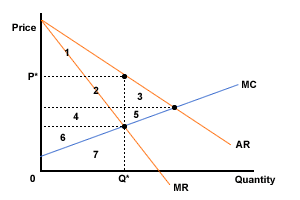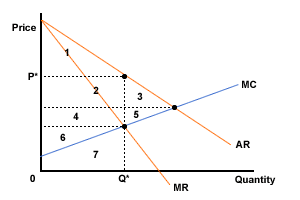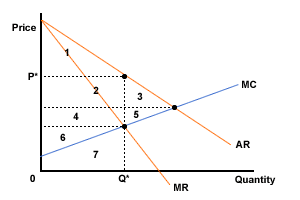Efficiency and market structure
We are concerned here with concentrated (monopoly and oligopoly) and competitive markets.
Competitive markets are considered to be statically efficient - both allocatively and productively. Dynamic efficiency is another matter. Because firms are all small, no one firm can afford research and development (R&D); it would have to be done on a collective or industrial basis. This has been done, but a number of problems arise over funding levies and charges.
Concentrated markets, on the other hand, are considered to be inefficient in the short-run. They are statically inefficient, even though their AC may be significantly lower than their smaller 'perfectly competitive' equivalent. The profit motive makes them strive to be more efficient, so they may invest in R&D and may be dynamically efficient

1 |
Monopoly vs perfect competition
In the diagram below, which area represents the level of consumer surplus under perfect competition?
|
2 |
Monopoly vs perfect competition
In the diagram below, which area represents the level of consumer surplus under monopoly?
|
3 |
Monopoly vs perfect competition
In the diagram below, which area represents the welfare loss if a monopolist takes over a perfectly competitive industry?
|



